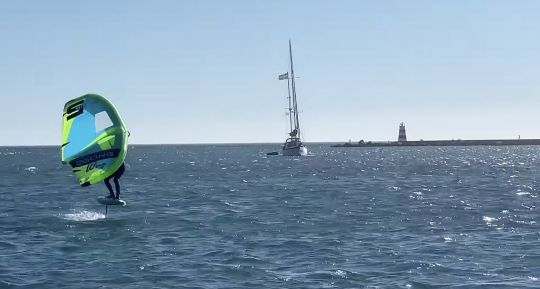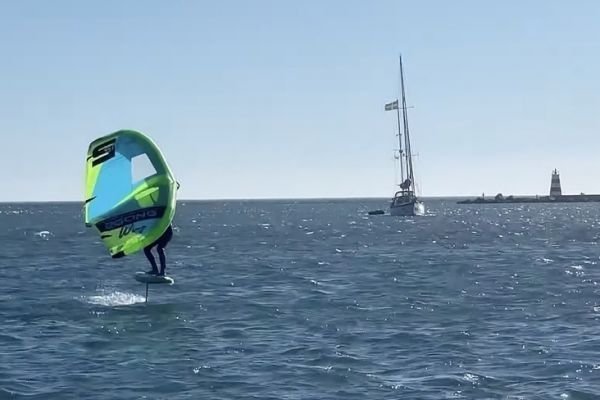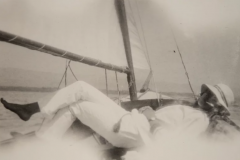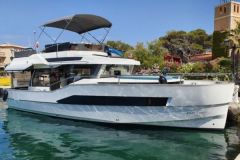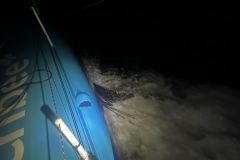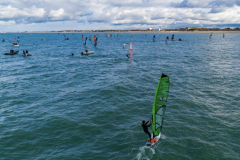The Wingfoil
Wingfoiling is a water sport that combines several elements: a board - which can be inflatable - a foil, and an inflatable wing held in the rider's hands. The concept is simple: the foil's wing creates lift, enabling the wingfoiler to glide over the water while being lifted. This experience allows you to "fly", as we say in the industry. Technically, wingfoiling is accessible to a wide audience, from beginners to experts, and many people are now taking up the sport. What's more, its relatively light and compact equipment makes it easy to transport, making it attractive to boaters.
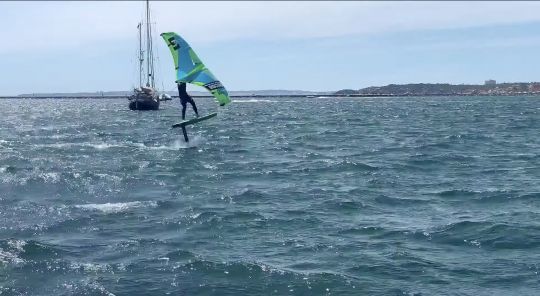
Necessary conditions
To practice wingfoil, you need wind. And when you're just starting out, it's easier to learn with plenty of wind. To get the hang of it, at least 15 knots on flat water is ideal. For example, you could choose to anchor in a bay sheltered from the swell, but which catches the wind. For safety's sake, you should prefer a wind that doesn't blow you out to sea. When you're just starting out, it's usual to fall off a lot, and the drift is consequent. If you have a powerful dinghy, the ideal solution is to have it towed, so you don't have to exhaust yourself rowing back to your starting point. In summer, thermals are often present and are sometimes powerful enough to give good conditions.
Easily transportable
Unlike windsurfing, wingfoils are relatively easy to transport. The wing, the board (if inflatable) and the foil can all be stowed in a large bag, making them ideal for use on a boat.

Easy to install and store
To set up an inflatable wingfoil, it takes about 10 minutes from foil assembly to board and wing inflation. The same time is needed for dismantling. Unlike kitesurfing, where you have to unroll lines, the Wingfoil has the advantage of being very easy to launch. Simply attach your board leash and kite leash and try to fly. Ideally, you should inflate the whole thing on the rear skirt, if you have one, to avoid the inconvenience of the kite getting caught in an obstacle, such as a shroud. So this wind sport is ideal, because it's possible to set off from the boat, it's easy to set up and stow away, and there's no risk of tangling the lines as in kitesurfing. If you anchor in a windy bay, you'll never want to leave.

Precautions to be taken
However, it's essential to note that wingfoil, like all water sports, involves risks. The foil can be sharp and falls quite spectacular, especially in the early stages. It's advisable to wear safety equipment such as a helmet and impact vest. Learning to fly a Wingfoil depends on the individual, but it's clear that proper training will save you time. Don't forget to enjoy your learning. Even though learning wingfoil may seem daunting at first, you'll have a lot of fun later on.
